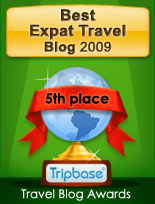Olga and me
"I'll tell you a secret," my Russian friend Olga Tikhanova Irez said. My husband and I are moving from Istanbul."
I was shocked. Olga had built a business known all over the world giving culinary walks in Istanbul. She had foodies beating a path to her door. The seats for her monthly breakfast cafes were so coveted, Istanbullians were lucky to get a spot. How could she give that up?
"We purchased a place in Alaçatı, Turkey and we're going to create a restaurant there. I want to feature the food of our grandmothers," she added.
Alaçatı is a well-known resort area on Turkey's North Aegean coast where many Turks go to vacation. Every year it hosts the world wind-surfing championships because its bay has the perfect conditions for windsurfing.
I had been to Alaçatı and knew how fantastic its open-air produce market was, how the relaxed resort atmosphere would contribute to joyful gastronomy and a wonderful experience for her future diners. "I haven't announced it yet," she added.
I was so grateful to know! I simply had to go on one of Olga's culinary walks before she left Istanbul and began her new life. I immediately cleared the next day of any other activities. This was an Istanbul experience on my bucket list that I simply could not miss.
"Try not to eat before you come. Come hungry." Olga advised with understatement.
"Let's take a group photo
while we're all still skinny!"
My fellow foodies on the walk were two couples from Hong Kong, fast friends for twenty years, who had travelled the world together. They were in town for a medical convention where the two doctors would be presenting. The couples' warm friendship and enthusiasm for life added to the joy of the day.
Three different kinds of menemen,
wonderful Turkish comfort food.
We started at the dock in Kadiköy, a beautiful neighborhood for culinary exploration because so much of what makes Istanbul famous for Turkish food is all available within a couple blocks. Our first stop was a breakfast featuring two Turkish classics: menemen and Turkish tea.
Olga knows her menemen; her own recipe for the dish had been featured in the Guardian. So if she said "this is the place where you should come for menemen," I knew it had to be incredibly special. To preserve her 'secrets' I won't show you the names of any of the places she took us.
A beautiful Turkish tradition:
soldiers write notes on napkins here
and pin them to the wall,
as they come to eat
one last menemen
before leaving for their service,
or return for one
in celebration
of surviving it!
I loved the pride of these men -
all proud menemenciler!
Fıstıklı dürüm.
Dürüm is a Turkish word
used to describe
anything rolled,
making this
rolled-pistachio baklava.
Next up was a specialty of Gaziantep, Turkey, baklava. Gaziantep is famous as the culinary capital of Turkey. The number one thing to eat there, on a very long list of gastronomic treasures, is baklava. I had never tried fıstıklı dürüm baklava before this day. It has become my new dessert obsession.How good is this baklava? Just to learn about this one particular type of baklava would be enough of a culinary education to make the whole day a success. I love it that much. Yet, we were just getting started!
The walnut-based baklava in back
is topped with kaymak,
a very fragile Turkish
clotted cream
that can make one swoon.
Kaymak,
a pillow of extraordinary excellence,
must be eaten
the day it is made.
There are no words.
The taste! The perfection!
The tradition!
I love all of the imagination
Turks bring to making nuts sing
in their desserts.
And then they add: kaymak!
People travel
from all over the world
to eat this.
The green baklava
is fıstıklı ezme.
Think of it as pistachio marzipan.
Isn't that a brilliant idea?
Pistachio marzipan?
It is every bit as fantastic as it looks.
What brilliant imagination!
The other baklava
features a bit of crunch
paired with the pistachio goodness.
As global as
Western markets have become,
there are still
many, many produce surprises
to discover via travel.
Here are three offerings
I had never seen
until moving to Turkey.
until moving to Turkey.
I love the mystery of them.
What does one do with them?
We passed many mysteries
as we walked around
Kadiköy's open-air market.
Olga would
patiently explain each one.
Next up, was one of the most beautiful of Turkish food ideas:mezes. Mezes are usually the appetizer to a meal and Turks have hundreds and hundreds of different recipes for them.
The meze tradition is to offer a little taste of this and a little taste of that. I have always thought it was the perfect way to acclimatize children to more sophisticated tastes. "Just try a bite," I can imagine Turkish parents saying.
We popped into one of my favorite spots in the open-air market of Kadiköy, a great gastronimical shop showcasing tantalizing mezes and superb regional food products.
Olga had her favorites
she wanted us to taste.
There were so many choices!
Olga assembled a
model meze masterpiece.
Most of these mezes
are vegetable-based.
You can't go wrong
they are so delicious and healthy.
I love the taste combinations
new to my American palate
like the carrot and eggplant meze
right in the middle of the plate.
I've gone back for it again and again.
If I could popularize
one vegetable
back home in America
it would be eggplant.
I never grow tired
of all the different ways
Turkish cooks use it.
It's fantastic!
If you had told me that,
I would never have believed it
because I really
hadn't experienced it before.
The meat on the left is pastirma,
a specialty of Kayseri, Turkey.
I lived in Turkey a year before
I had the guts to try it.
It seemed so different:
dried meat with a paste around it?
How could that be good?
Sounds like something
mountain men
would pack in a duffle.
Then I had pastirma in menemen.
Wow. I'm hooked.
On the right
a meatball new to me
that was a more subtle
a meatball new to me
that was a more subtle
taste sensation.
The mezeci loved giving
Olga a hard time
as they posed for photos.
All kinds of Turkish cheeses
vacuum-packed
to take home to Asia.
Next stop: a UNESCO
"intangible cultural heritage"
'Turkish kitchen' isn't just about the food. Yes, the food is fabulous. 'Turkish kitchen' is also about the rituals that go with each different food. Our next stop was to try a Turkish ritual so globally cherished UNESCO has labeled it "an intangible cultural heritage."
Around the corner
from our meze shop
was one of Istanbul's
most beloved Turkish coffeeshops.
It was the perfect spot
to wind down
from an exciting morning
before venturing out
for more discovery.
Each Turkish coffee
is accompanied by a
glass of water
and a single bite
of sweetness.
See the lokum?
In English,
it's known as 'Turkish Delight.'
Turkish coffee is exquisitely satisfying. The first steaming hot sip of the foamy concoction sends a signal to all nerve endings: slow down, enjoy, relax.
Me telling fortunes
Photo by Olga
Each sip is savored as simply as the conversation and fortune telling that ensue when the cup of coffee is finished. The cup is turned over and the pattern of the coffee grounds fortell one's future as a friend 'reads' the inside of the cup.The ritual of it all is enough to make an overseas Turk cry out with homesickness at a mere photograph of Turkish food rituals.
Pickled cabbage
There were more specialty food stores to explore after our coffee. We were off to the pickle place next. It seems everything can be pickled!
Olga offered us
a cool refreshing glass
of pickle juice.
She also offered us
fresh turnip juice
called şalgam.
Don't turn it down
because it sounds odd.
It's fantastic,
especially when paired
with the
specialty meat kebabs
from the cities
out East.
Şalgam is zingy, fresh, delicious!
All of these
fresh regional food products
can be vaccum-packed
to take home in one's suitcase.
You didn't think
we would go through an
Istanbul culinary adventure
without fish, did you?
This gorgeous plate
of fried hamsi
is from the Black Sea.
The Black Sea
has its own special culture
and hamsi (fried anchovies)
makes a Black Sea Turk
puff up with pride.
Bet you can't eat just one.
I forgot the name
of this spicy chicken dish
but it was tender and juicy
and yummy over rice.
After our lunch
of fish and chicken
Olga had one last
open-air
produce market
she wanted to show us.
It was huge,
stretching for several blocks.
We walked through it all,
pausing here and there
to explain
produce new to us.
They taste as wonderful
as they look -
as they look -
Çanakkale tomatoes.
Why can't we have
tomatoes like this
tomatoes like this
back home?
Skinny green peppers
are the Turks' favorite;
They are frequently grilled
and served with kebab.
Even before I went on
this food walk
with Olga,
I think of her whenever
I see beautiful market greens.
She knows exactly
what to do with them.
Foraging for nettles
and spring greens
is a beautiful Russian
childhood tradition.
These flat beans
which I've never seen
for sale in America,
make a delicious cold salad
called Ayşe Kadin Fasulye
(the woman Ayse's beans).
Plan on buying a lot?
Porters will carry
all of it for you
as you make
your selections.
I was so grateful to experience 'Olga's Istanbul' before she moved.I can't wait to follow her restaurant adventure. You can follow her restaurant adventure too via her blog, Delicious Istanbul, or make reservations directly at the Babushka Alaçatı website.
If you enjoyed this post, you may enjoy these other foodie posts about Istanbul:
Enjoying Olga's #Istanbulbreakfastclub
The Days of Wine and Roses and Tulips: Wine Tasting at the Four Seasons Sultanahmet
Dinner on the Bosphorus at the Çırağan Palace Kempinski's Bosphorus Grill
Afternoon Tea and Pastry with Guest Chef Yann Duytsche in the Gazebo Lounge at Çırağan Palace Kempinski
"Midnight at the Pera Palace Hotel" with the Global Minds Book Club
If you enjoyed this post, why not share it? You can also subscribe to my blog for free via Facebook or through RSS (see the sidebar on the right).
Thanks for reading!













 Who links to me?
Who links to me?
